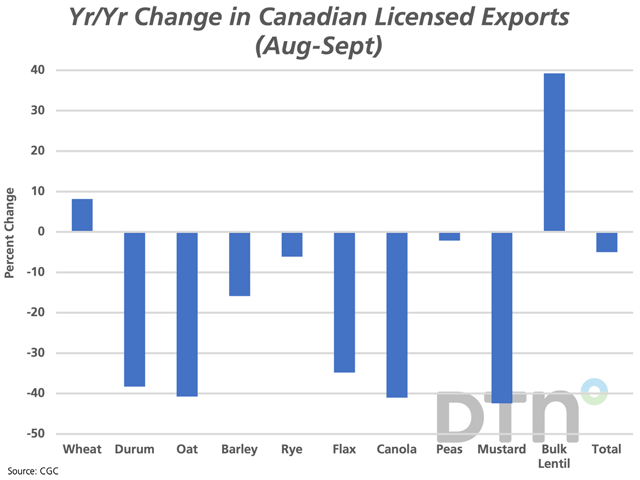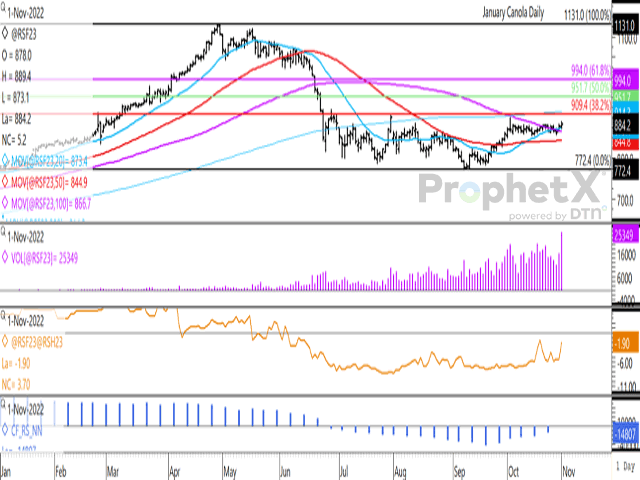
The CGC's Export of Canadian Grain and Wheat Flour report shows cumulative exports of the major crops down 5% year-over-year.

The CGC's Export of Canadian Grain and Wheat Flour report shows cumulative exports of the major crops down 5% year-over-year.

The January canola contract closed at its highest level in more than three months on Nov. 1, while ending in the top 25% of the range traded during the past four months.
DIM[2x3] LBL[blogs-canada-markets-list] SEL[[data-native-ad-target=articleList]] IDX[2] TMPL[news] T[]
DIM[2x3] LBL[blogs-canada-markets-list-2] SEL[[data-native-ad-target=articleList]] IDX[5] TMPL[news] T[]